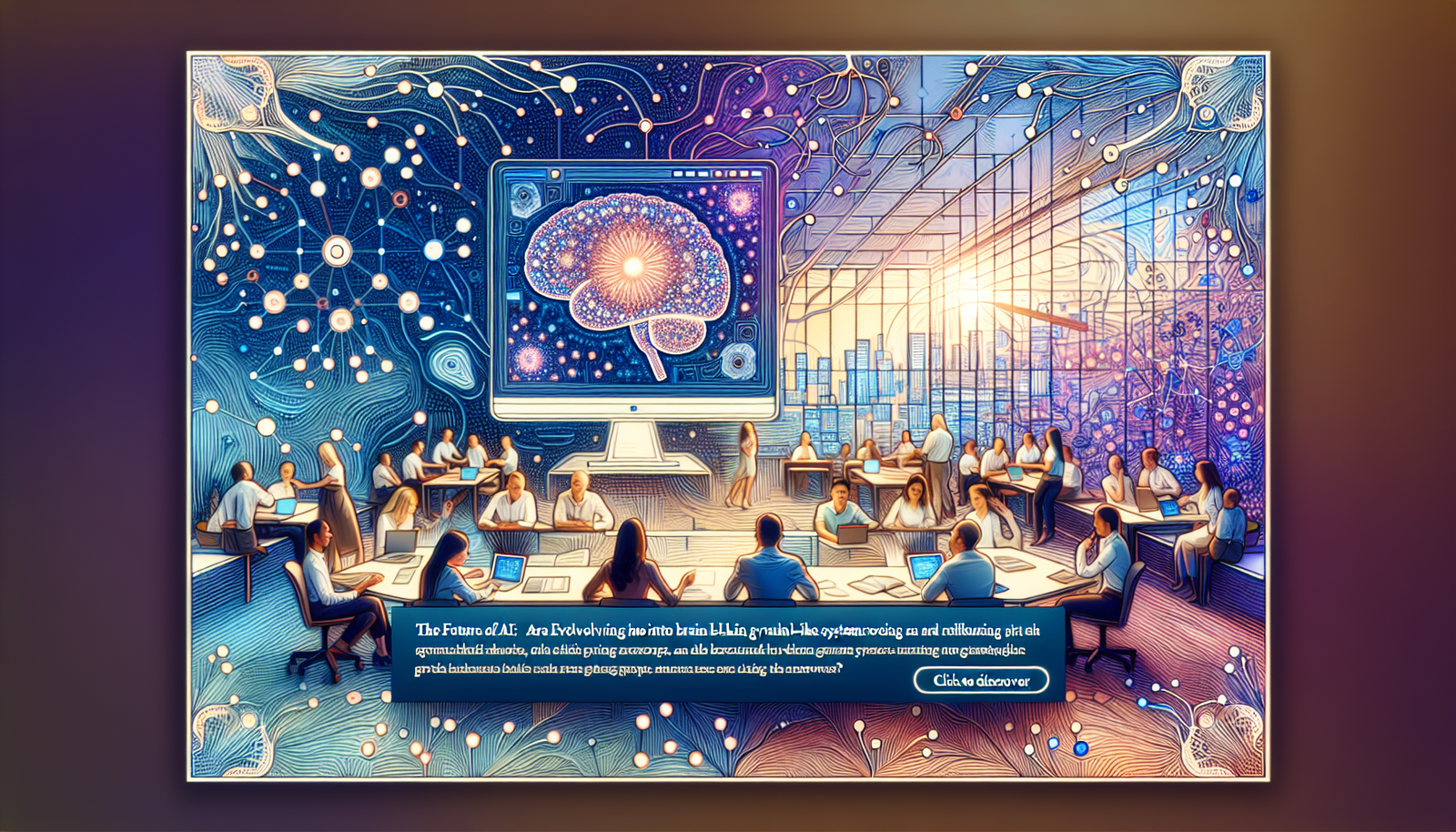Recent advancements in language models develop fascinating similarities with *human neural processing*. _LLMs_, such as ChatGPT, are evolving towards an increasingly sophisticated architecture, mimicking brain processes. A recent study reveals that these models, by improving their performance, are approaching a functionality specific to human cognition. The implications of this convergence extend far beyond simple linguistics, affecting fundamental areas such as understanding, creation, and human interaction.
LLMs and their advances towards brain-like functioning
Research on large language models (LLMs) has significantly evolved, highlighting their capacity to mimic human cognitive processes. This convergence between LLMs and brain functioning was recently highlighted by a study conducted by researchers from Columbia University in collaboration with the Feinstein Institutes for Medical Research at Northwell Health.
An innovative study on LLMs
The researchers analyzed the similarity between the representations of LLMs and the neural responses observed in patients undergoing neurosurgical treatment. The results of this study, published in Nature Machine Intelligence, indicate that state-of-the-art language models, such as ChatGPT, tend to become more similar to human brain processes as they refine themselves.
Methodology and results
In this study, twelve open-source models, having nearly identical architectures and parameter counts, were examined. The collected data included neural responses when participants listened to speeches, which served as a point of comparison for the embeddings extracted from the same speeches by the LLMs. The ability to predict brain responses from these textual representations was evaluated, establishing a parallel between the performance of LLMs and brain activity.
Matching between LLMs and brain functioning
Estimating the correspondence between the models and the brain has led to fascinating discoveries. Researchers observed that LLMs, like GPT-4, become more efficient in retrieving information as their complexity increases. The alignment of the layers of these models with brain regions dedicated to language processing is also improving.
Implications of the research
Significant implications emerge from these results. The modern approach to LLM architectures seems to imitate cognitive principles that the brain uses to process language. This finding could suggest that there are fundamental bases for understanding language processing, for both natural and artificial systems.
Future perspectives
The work of Mischler and his colleagues opens new avenues for complementary research aimed at deepening the study of LLMs based on neural responses. Such investigations could inform the design of future LLMs, ensuring they align better with human mental processes. A better understanding of the early layers in high-performing LLMs could also lead to innovations to enhance their efficacy.
LLMs are becoming increasingly brain-like as advancements progress. This observation could transform our understanding of artificial intelligence, giving rise to new hypotheses regarding optimal methods for language processing by artificial systems. The ongoing exploration of this fascinating topic promises to shed more light on the links between human cognition and artificial intelligence.
Upcoming research projects should offer fascinating insights for science and technology in the field of LLMs, facilitating a more inclusive approach to language processing, both for machines and humans. It remains to be seen how these discoveries will influence innovations in the next generations of language models.
Frequently Asked Questions about LLMs and their evolution towards brain-like functioning
How do LLMs mimic brain processes in language processing?
Large language models (LLMs) utilize internal structures similar to the neural networks of the human brain to process and generate language, allowing them to imitate certain cognitive functions associated with language.
What research supports the idea that LLMs are becoming more similar to the human brain?
Recent studies, notably those conducted by researchers at Columbia University, have shown that LLMs, such as ChatGPT, display increasingly aligned neural responses with those of the human brain as they refine themselves.
What does this mean for the future of LLMs and their use?
This evolution suggests that LLMs can develop linguistic capabilities similar to those of the human brain, paving the way for more advanced applications in artificial intelligence, particularly in communication and language understanding.
What types of models were studied for this research?
The research focused on 12 recent open-source models with similar architectures and parameters, allowing for an analysis of their performances in parallel with the brain activity observed in patients.
Why is it important to understand the similarity between LLMs and the brain?
Understanding these similarities helps optimize the design of LLMs by making their functioning closer to that of the human brain, which could enhance their performance and efficiency in language processing.
Can current LLMs really be considered ‘brain-like’?
Although LLMs are becoming increasingly similar to brain mechanisms, they remain artificial tools whose functioning and understanding are still largely unexplored compared to those of the human brain.
How do the results of studies influence the future development of LLMs?
The findings highlight the importance of the early layers of LLMs in their success, which could lead to changes in how these models are trained to make them even more effective.






